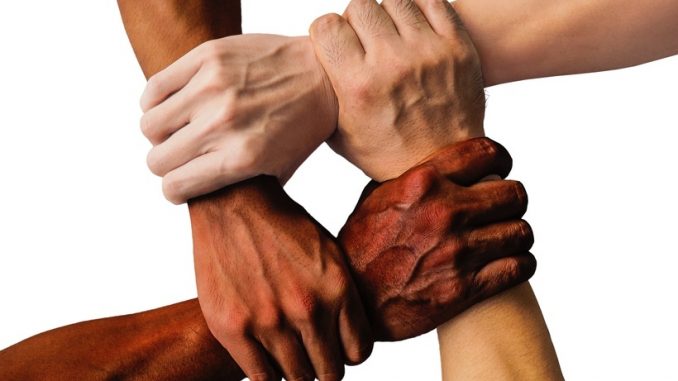
Ashe Schow, Daily Wire, January 7, 2019
The University of Michigan (UM) spends about $10.6 million a year on the salaries of 82 employees who have something relating to diversity in their title.
Mark Perry, an economics professor at the university and an American Enterprise Scholar, compiled data on publicly available salaries searching for the terms “diversity,” “equity,” and “inclusion.” He found 82 employees with some combination of those words in their title and added up their salaries for the total. The highest paid employee with a variation of this title is the school’s vice provost for equity and inclusion and chief diversity officer (that’s his full title), who is paid $407,653 a year.
Adding up the salaries for these 82 employees totals $8 million, but once you add in benefits, the total jumps to about $10.6 million.
“The University of Michigan Has At Least 82 Full-Time Diversity Officers at a Total Annual Payroll Cost of $10.6M. That Would Support Full In-State Tuition for 708 Students,” Perry wrote in a tweet about his data.
{snip}
UM spokesman Rick Fitzgerald {snip} explained that UM has a centralized Office of Diversity, Equity, and Inclusion (ODEI), but that other schools and departments at the university have their own “specialist” to handle diversity. For example, student housing has an associate director for diversity and inclusion (who makes $75,760 a year) and the school of music, theatre, and dance has a diversity and inclusion specialist (who makes $109,778 a year).
Perry also explained that he left off 11 out of 14 employees from the Office for Health Equity and Inclusion because they are part of the medical school and hospital. He was trying to be conservative when making his list, but adding in those other employees brings the total to 93 full-time “diversicrats,” as he calls them, and adds another million dollars to the total salaries.
The data shows, according to Perry, that schools are spending more and more on “diversity” as tuition and other colleges costs increase:
The explosive growth in diversity staffs at universities, as just one example of the explosive growth in “administrative bloat” in higher education, which is one of the major contributing factors to the explosive growth in college tuition. As the attached chart shows, except for the cost of hospital services, there are no other consumer goods, products or services that have increased more over time than college tuition and college textbooks. As college tuition has skyrocketed, largely due to the increased administrative overhead including now small armies of full-time diversity bureaucrats, the cost of college for many students today is only affordable by taking on the burden of huge amounts of student loan debt. As of Q3 2018, there was $1.56 trillion in outstanding student loan debt, and at the current growth rate that will surpass $2 trillion by the end of this year (2019). Student loan debt has tripled since 2006 and doubled since 2010, burdening the average student borrower with $37,000 in student loan debt for the 44 million borrowers.
So, after all this money has been spent, is UM any more diverse, or equitable, or inclusive? {snip}
In other ways, diversity efforts appear to be underwhelming. UM’s report on the ethnicity of enrolled students each fall shows there are actually fewer black students enrolled now than in 2009 (though the number has been climbing for the past few years) and fewer Native American students enrolled over the same period. The number of Asian and Hispanic students has increased by quite a bit over this same time period. There were 4,661 Asian students enrolled at UM in the fall of 2009, and 5,899 enrolled in the fall of 2018. There were 1,577 Hispanic students enrolled in 2009, and 2,891 enrolled now.
So, there are increases, but are these increases enough to justify more than $10 million a year spent on diversity? Could the increases be from population increases, rather than anything the university has done?